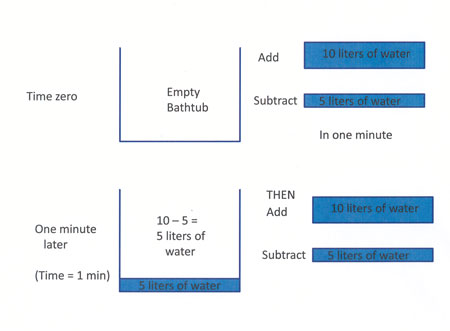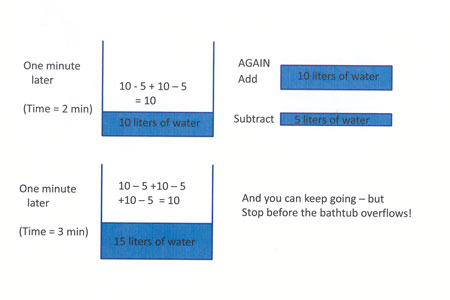I’m going to write a little bit more about a “climate misconception” to follow up on the blog I did a few weeks ago. This relates to how our cutting back on carbon production affects the amount of carbon dioxide in the atmosphere. In the earlier blog, I stressed the long lifetime that carbon dioxide has in the atmosphere as being an important reason why it will take a long time to reduce the amount of carbon dioxide in our atmosphere.
But I missed an important misconception: many think that simply keeping the amount of carbon dioxide we release the same will keep the carbon dioxide in the atmosphere the same. Similarly, many think that reducing the amount of carbon dioxide we release will reduce the amount of carbon dioxide in the atmosphere.
As recently discussed in a recent article in Science, there is a fundamental misconception. We forget that the total amount of carbon dioxide in the atmosphere relates to how much we release and how much nature (or, if you prefer, the Earth system) can absorb.
The article describes a question asked of students at the Massachusetts Institute of Technology – a very smart bunch of people. The question went something like this:
Suppose we put twice as much carbon dioxide into the atmosphere as the earth system can absorb. How will the carbon dioxide in the atmosphere change if we keep producing the same amount of carbon dioxide?
A surprisingly large number thought that the carbon dioxide in the atmosphere would stay the same if we didn’t change our habits at all.
Does that seem right to you? Perhaps it does, because we have seen reports of increased amounts of carbon dioxide put into the atmosphere by humans, and an increase of carbon dioxide in the atmosphere. So we might be led to think that if we keep putting in the same amount of carbon dioxide, then the amount of carbon dioxide in the air will stay the same. And we can reduce the amount of carbon dioxide in the air simply by reducing the amount we put into the air.
But let’s stop and think a minute. The question states that the earth system can absorb just half of what we are putting in.
Suppose we have a bathtub. We turn on the water faucet full blast and leave the drain open, so that the amount of water going into the bathtub is twice what is draining out.
Do you think that the level of water in the bathtub will remain the same? Or are you worried that the bathtub will overflow?
Let’s go through the bathtub problem step by step.
Start with an empty bathtub.
In one minute –10 liters of water comes out of the faucet, and we drain out five. (At least this is what happened when I did it.)
At the end of one minute, how much water is in the bathtub – five liters!

Figure 1. Putting water in a bathtub (well, a funny-looking bathtub) and draining it out.
And the end of the second minute, another 10 liters of water has come out of the faucet, and five have drained out.
How much water is in the bathtub? Five liters, plus the ten liters from the faucet, minus five liters that drained out – that’s 10 liters.

Figure 2. Filling up the same bathtub, after two and three minutes.
At the end of the third minute, another 10 liters of water has come out of the faucet, and five have drained out. How much water is in the bathtub now? Ten liters already there, plus the ten liters from the faucet, minus five liters that drained out … 15 liters!
I could continue on, but I think you have the idea – the bathtub is filling at the rate of 5 liters a minute.
Now let’s go back to the carbon dioxide? What do you think now? If you think that the amount of carbon dioxide in the atmosphere will increase with time, even if we release the same amount into the atmosphere, you have the right answer!
Of course, our atmosphere (and people) are much more complicated than that. Different parts of the earth system – trees, grasses, the ocean – take carbon dioxide out of the atmosphere in different ways. And there could be other natural sources of carbon dioxide. We have a good idea about how things work, and what possibilities there are, but there is still much we don’t know. Thinking about the bathtub again, the drain might clog up a little bit or drain better, or water could be flowing from a second faucet.
This blog was inspired by the Policy Forum, by John D. Sterman in the 24 October 2008 issue of Science.

This is such an excellent article, a great way of making such a difficult subject easy and fun to understand! I love this website, it has so much information. Thanks for sharing, and keep up the great work!